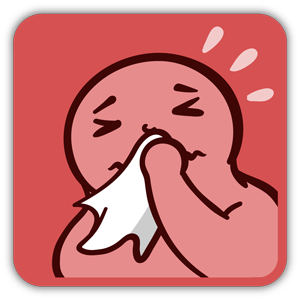Simulate Daily Disease Spread
Simulation Board
|
|
A |
B |
C |
D |
E |
F |
|---|---|---|---|---|---|---|
|
1 |

|

|

|

|

|

|
|
2 |

|

|

|

|

|

|
|
3 |

|

|

|

|

|

|
|
4 |

|

|

|

|

|

|
|
5 |

|

|

|

|

|

|
|
6 |

|

|

|

|

|

|
Simulator Status
-
Susceptible
-
Infectious
-
Removed
-
Susceptible
-
Infectious
Settings | Day 0
Before you begin the simulation (Day 0), enter numbers between 1 and 100 as the initial Transmission Probability and initial Recovery Probability.
You can change these two probabilities at the beginning of each day in the simulation.
Transmission and Recovery Probabilities
- For example, a transmission probability of 25% means that there is a 25% (1 in 4) chance that a susceptible individual will become infected if they are a close contact of an infectious individual.
- If the transmission probability is small, it is less likely the pathogen will spread from an infectious individual to a susceptible individual.
- If the transmission probability is large, it is more likely the pathogen will spread from an infectious individual to a susceptible individual.
- For example, if an infection lasts 5 days on average, there is a 1 in 5 chance that an infectious individual will recover on any given day. So, the recovery probability is 1/5 = 0.2 = 20%.
- If the recovery probability is small, an infectious individual will remain infectious for a relatively long period of time and has more opportunities to infect others.
- If the recovery probability is large, an infectious individual will remain infectious for a relatively short period of time and has fewer opportunities to infect others.
Set Initial Case
- Select an individual in the population grid as the first infectious case in this population.
- Select the “Set Initial Case” button that appears.
- To change the initial case, perform the same action on a different individual.
Simulate each day by following these steps:
-
For each infectious individual in the population grid, select their icon, then “Simulate New Infections.” Select “Done” when finished with all infectious individuals.
-
Optionally, select one susceptible individual to vaccinate, then select “Done.” Or select “Skip.”
-
Reveal the number of recovered individuals by selecting “Simulate New Recoveries.”
-
Copy the numbers of infectious and removed individuals into the “SIR Data Table,” or turn on “Autofill” to automatically fill in the table. Select “End Day” to proceed.:
Current Day's Data
Current Day's Data, Infectious: 0Current Day's Data, Removed: 0
SIR Data Table
| Day | Current Day 0 | 1 | 2 | 3 | 4 | 5 | 6 | 7 | 8 | 9 | 10 | 11 | 12 | 13 | 14 | 15 | 16 | 17 | 18 | 19 | 20 | 21 | 22 | 23 | 24 | 25 |
|---|---|---|---|---|---|---|---|---|---|---|---|---|---|---|---|---|---|---|---|---|---|---|---|---|---|---|
| Susceptible | 36 | |||||||||||||||||||||||||
| Infectious | ||||||||||||||||||||||||||
| Removed |
SIR Graph
This graph shows changes in the number of individuals in each group (susceptible, infectious, and removed) over time. Listen to the Graph







